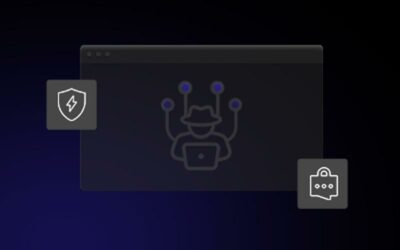Small to midsize businesses have the most to gain from their e-commerce platforms. By establishing an online storefront, business owners have an easy and accessible way to increase their sales potential.
Unfortunately, e-commerce technology also exposes businesses to the threat of security breaches and fraud. Now more than ever, it is imperative to safeguard not only your website but also your customers’ data and identity.
Here are five steps that will help you prevent e-commerce identity theft.
START WITH SECURITY
The first step in cybersecurity begins with your chosen e-commerce platform.
While it is tempting to pick a platform based on its flashy design and convenient functionality, do not overlook the service’s built-in security features.
The best e-commerce technology offers SSL (Secure Sockets Layer) certification, multi-step authentication requirements, encrypted payment portals, and frequent security patches.
These essential security measures will not only start your online business off on the right foot; they will also ensure the long-term relevance and growth of your company.
CERTIFY YOUR WEBSITE
As mentioned previously, your website should be configured with an SSL certificate. SSL certification encrypts the data that is shared between a web browser and server. It’s the best form of online security for your business and clients.
Once SSL encryption is established, you will receive a HyperText Transfer Protocol Secure (HTTPS) designation. HTTPS websites are considered safe and secure and are therefore given higher rankings by most search engines.
HTTPS configured pages receive a green padlock symbol indicating their trustworthiness, while unencrypted websites without HTTPS status pop up as “not secure.”
A certified website can do everything from increasing your web traffic and promote your visibility to prevent an unnecessary DNS leak and decrease cybersecurity threats.
CONSTANTLY UPDATE
Once your e-commerce platform is established and certified, be sure to stay up to date with the latest security patches. Hackers are always on the lookout for websites and software that are not updated and are therefore more vulnerable.
Even after installing the necessary updates, it is also a good idea to test your website for weaknesses. Cyber attackers are known to introduce malware into unprotected systems, so it’s best to test your security strength frequently.
LIMIT DATA COLLECTION
Just because you can collect your customers’ personal data, does not mean that you should.
In fact, collecting such sensitive information is a liability. Consider what would happen if there was a breach in your security and all of your user data was stolen or lost.
While some personal data is certainly important to improve the customer experience on your website, make sure to only collect what you need in order to be less of a target for cyber attackers.
This also applies to credit card information. Do not get in the habit of storing client credit card numbers on your online servers. It is not only a huge temptation for identity thieves; it is also a direct violation of the Payment Card Industry Data Security Standard (PCI DSS), which is dedicated to protecting customer data.
Instead, consider using applications like PayPal, Stripe, or Authorize.net to handle all credit card transactions.
REQUIRE STRONG PASSWORDS
Finally, even the strongest security measures are no match for a weak password.
When establishing the user portal of your e-commerce site, be sure to require strong, frequently updated passwords and two-factor authentication from your customers.
Passwords should be at least eight to 10 characters with a combination of numbers, letters, and symbols. They should also be changed often.
There are various password managers and identity management systems that can help both customers and businesses better safeguard their confidential information. Because let’s face it: a customer’s password is often their first line of defense in protecting their e-commerce identity.
E-commerce security is constantly evolving. The key to protecting your customers from identity theft is to keep security top of mind and stay apprised of these ever-changing threats. By employing the above security measures, you have the potential to not only protect your business from cyberattacks but also establish trust between you and your valued customers.




